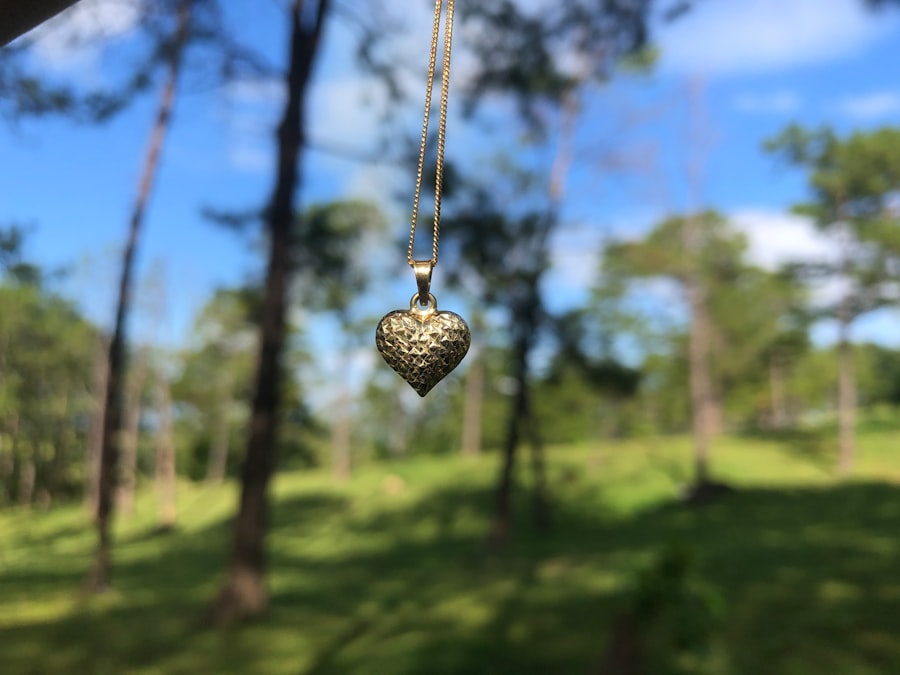
The Meaning of Life: The Tree of Life Necklace
The Tree of Life necklace has emerged as a powerful symbol in contemporary jewelry, resonating with individuals across various cultures and backgrounds. This intricate design, often featuring a stylized tree with roots and branches, encapsulates profound meanings that extend beyond mere aesthetics. The Tree of Life serves as a reminder of the interconnectedness of all living things, representing growth, strength, and the cyclical nature of life.
As a piece of jewelry, it transcends its ornamental purpose, becoming a personal emblem that many wear to express their beliefs, values, and connections to their heritage. Crafted from a variety of materials, including precious metals like gold and silver, as well as more organic elements such as wood or gemstones, the Tree of Life necklace can be found in countless styles. Some designs are minimalist and modern, while others are ornate and detailed, reflecting the wearer’s personality and taste.
The versatility of this necklace makes it suitable for various occasions, from casual outings to formal events. As it garners popularity, the Tree of Life necklace continues to evolve, adapting to contemporary fashion trends while retaining its deep-rooted significance.
Key Takeaways
- The Tree of Life necklace is a popular and meaningful piece of jewelry that symbolizes growth, strength, and connection to the natural world.
- The Tree of Life is a powerful symbol that represents the interconnectedness of all living things and the cycle of life, death, and rebirth.
- The Tree of Life has been a significant symbol in various cultures and religions, including Celtic, Norse, and Christian traditions.
- The Tree of Life holds spiritual significance in many belief systems, including Buddhism, Kabbalah, and Paganism, representing wisdom, knowledge, and enlightenment.
- The Tree of Life necklace is not only a symbol of spirituality but also a fashionable accessory that can be personalized to reflect individual style and beliefs.
Symbolism of the Tree of Life
The symbolism of the Tree of Life is rich and multifaceted, drawing from various interpretations across cultures and philosophies. At its core, the tree represents life itself—its roots symbolize stability and grounding, while its branches signify growth and expansion. This duality reflects the journey of life, where individuals are anchored by their origins yet constantly reaching for new heights and experiences.
The leaves of the tree often symbolize renewal and vitality, reminding us that life is a continuous cycle of birth, growth, decay, and rebirth. Moreover, the Tree of Life embodies the concept of interconnectedness. Just as a tree connects its roots to the earth and its branches to the sky, humans are linked to one another and to nature.
This idea resonates deeply in ecological discussions about sustainability and environmental stewardship. Wearing a Tree of Life necklace can serve as a personal commitment to these values, reminding the wearer of their role in the larger tapestry of life. It encourages mindfulness about one’s actions and their impact on the world around them.
Historical and Cultural Significance

Historically, the Tree of Life has been a prominent motif in various cultures around the globe. In ancient civilizations, such as those in Mesopotamia and Egypt, trees were often seen as sacred entities that connected the heavens and the earth. The Sumerians revered a sacred tree known as the “Tree of Life,” which was believed to grant immortality.
Similarly, in Egyptian mythology, the sycamore tree was associated with the goddess Hathor and was thought to provide nourishment for the soul in the afterlife. In addition to its ancient roots, the Tree of Life has found its place in various cultural narratives. In Celtic traditions, for instance, the tree symbolizes wisdom and strength, with each type of tree representing different qualities.
The Celts believed that trees were sacred beings that held knowledge and could communicate with humans. This reverence for trees is reflected in their art and folklore, where they often appear as central figures in stories about creation and existence.
The Tree of Life in Different Religions and Spiritual Beliefs
| Religion/Spiritual Belief | Representation of the Tree of Life |
|---|---|
| Judaism | The Tree of Life is a symbol of the Torah and represents the connection between God and the Jewish people. |
| Christianity | In Christianity, the Tree of Life is associated with the Garden of Eden and the eternal life offered through Jesus Christ. |
| Islam | In Islamic tradition, the Tree of Immortality is mentioned in the Quran as a symbol of eternal life in paradise. |
| Hinduism | The Ashvattha tree is considered the Tree of Life in Hinduism, representing the interconnectedness of all living beings. |
| Buddhism | In Buddhism, the Bodhi tree is revered as the Tree of Enlightenment, under which Buddha attained enlightenment. |
| Native American Spirituality | The Tree of Life is a central symbol in many Native American cultures, representing the interconnectedness of all living beings and the natural world. |
The Tree of Life holds significant meaning in numerous religious and spiritual contexts. In Christianity, it is often associated with the Garden of Eden, where it represents eternal life and divine knowledge. The biblical narrative describes two trees: the Tree of Knowledge and the Tree of Life.
The latter is seen as a symbol of God’s promise of eternal life to humanity. This connection has led many Christians to adopt the Tree of Life as a symbol of faith and hope. In Hinduism, the concept of the Tree of Life is intertwined with the idea of samsara—the cycle of birth, death, and rebirth.
The Ashvattha tree (sacred fig) is particularly significant in this context; it is believed to be eternal and represents the interconnectedness of all beings. The roots symbolize ignorance while the branches represent knowledge; thus, understanding one’s place within this cycle is essential for spiritual growth. Similarly, in Buddhism, trees are revered as places of enlightenment; Siddhartha Gautama attained enlightenment under the Bodhi tree.
The Tree of Life Necklace as a Fashion Statement
Beyond its spiritual significance, the Tree of Life necklace has become a fashionable accessory that appeals to a wide audience. Designers have embraced this motif, creating pieces that range from delicate pendants to bold statement necklaces. The versatility in design allows individuals to express their personal style while also conveying deeper meanings associated with the symbol.
For many wearers, it serves as a conversation starter or a way to connect with others who share similar values or beliefs. Fashion influencers have also played a role in popularizing the Tree of Life necklace within contemporary trends. It can be seen adorning celebrities on red carpets or featured in fashion magazines as part of curated looks that blend elegance with meaningful symbolism.
As a result, artisans and jewelers are continually innovating their creations to cater to diverse tastes while maintaining the essence of what the Tree of Life represents.
Choosing the Right Tree of Life Necklace for You

Material Choice: Aesthetic Appeal and Durability
The first consideration is the material choice, which ranges from precious metals like sterling silver or gold to more affordable alternatives such as stainless steel or resin. Each material carries its own aesthetic appeal and durability characteristics. For instance, gold may symbolize wealth and prosperity, while silver often represents clarity and purity.
Design Intricacy: Minimalist or Elaborate
Another important aspect is the design intricacy of the necklace. Some may prefer minimalist designs that offer subtlety and elegance, while others might gravitate towards more elaborate pieces adorned with gemstones or intricate detailing.
Size and Lifestyle: Finding the Perfect Fit
The size of the pendant can also influence how it complements one’s wardrobe; larger pendants can serve as statement pieces while smaller ones may be more versatile for everyday wear. Additionally, considering how the necklace fits into one’s lifestyle—whether for casual outings or formal events—can guide the decision-making process.
Caring for Your Tree of Life Necklace
Proper care for your Tree of Life necklace ensures its longevity and maintains its beauty over time. Depending on the material used in crafting your necklace, different care methods may be required. For instance, silver jewelry can tarnish if exposed to moisture or air pollutants; therefore, storing it in a dry place or using anti-tarnish pouches can help preserve its shine.
For necklaces featuring gemstones or intricate designs, extra caution should be taken during cleaning to avoid damaging delicate components. Using mild soap mixed with water can effectively clean these pieces without causing harm; however, it’s essential to rinse thoroughly and dry them properly afterward.
Additionally, avoiding exposure to harsh chemicals found in perfumes or cleaning products will help maintain both the integrity and appearance of your necklace.
Finding Meaning and Purpose in the Tree of Life
The Tree of Life necklace serves as more than just an accessory; it embodies a rich tapestry of meanings that resonate deeply with individuals across cultures and beliefs. Whether worn for its aesthetic appeal or its symbolic significance, this piece invites wearers to reflect on their connections to nature, family, and spirituality. As people navigate their journeys through life—filled with challenges and triumphs—the Tree of Life stands as a reminder of resilience, growth, and unity.
In choosing a Tree of Life necklace that resonates personally, individuals can find not only a beautiful piece of jewelry but also an emblem that encapsulates their values and aspirations. As they care for this cherished item over time, it becomes intertwined with their own life story—a tangible representation of their experiences and beliefs that they carry with them wherever they go.
FAQs
What is a life tree necklace?
A life tree necklace is a piece of jewelry that features a pendant in the shape of a tree, often with intricate designs and details. The tree is a symbol of life, growth, and connection to nature.
What does the tree of life symbolize?
The tree of life is a symbol that is found in many cultures and religions around the world. It symbolizes connection to all living things, growth, strength, and the cycle of life.
What materials are life tree necklaces made of?
Life tree necklaces can be made from a variety of materials, including sterling silver, gold, rose gold, and stainless steel. The tree pendant may also be adorned with gemstones or crystals.
How can I style a life tree necklace?
Life tree necklaces can be styled in a variety of ways, depending on personal preference and the occasion. They can be worn alone as a statement piece, or layered with other necklaces for a more bohemian look. They can also be paired with both casual and formal outfits.
Are life tree necklaces suitable as gifts?
Yes, life tree necklaces are often given as meaningful gifts to symbolize love, family, and connection. They can be given for birthdays, anniversaries, or other special occasions.



